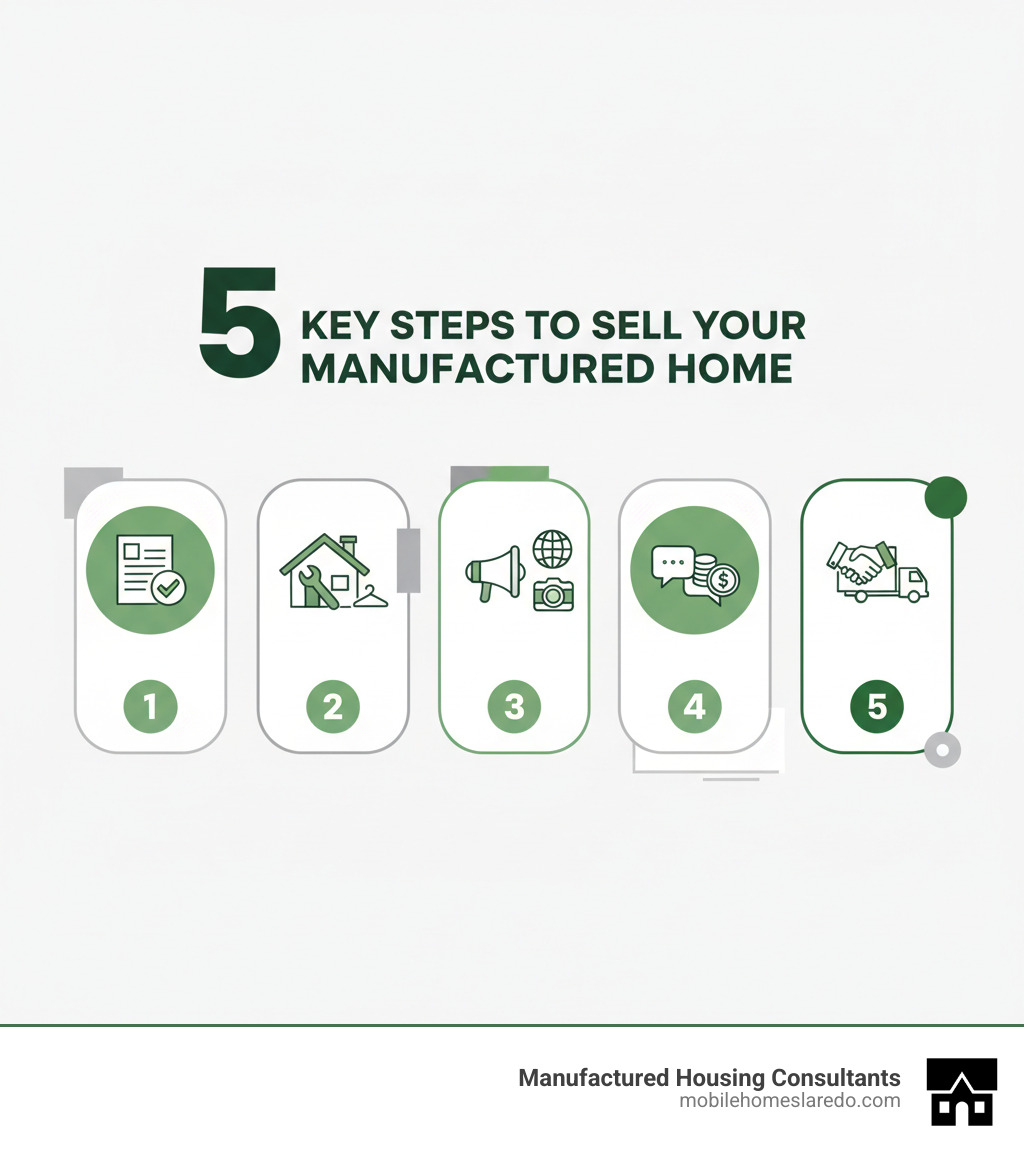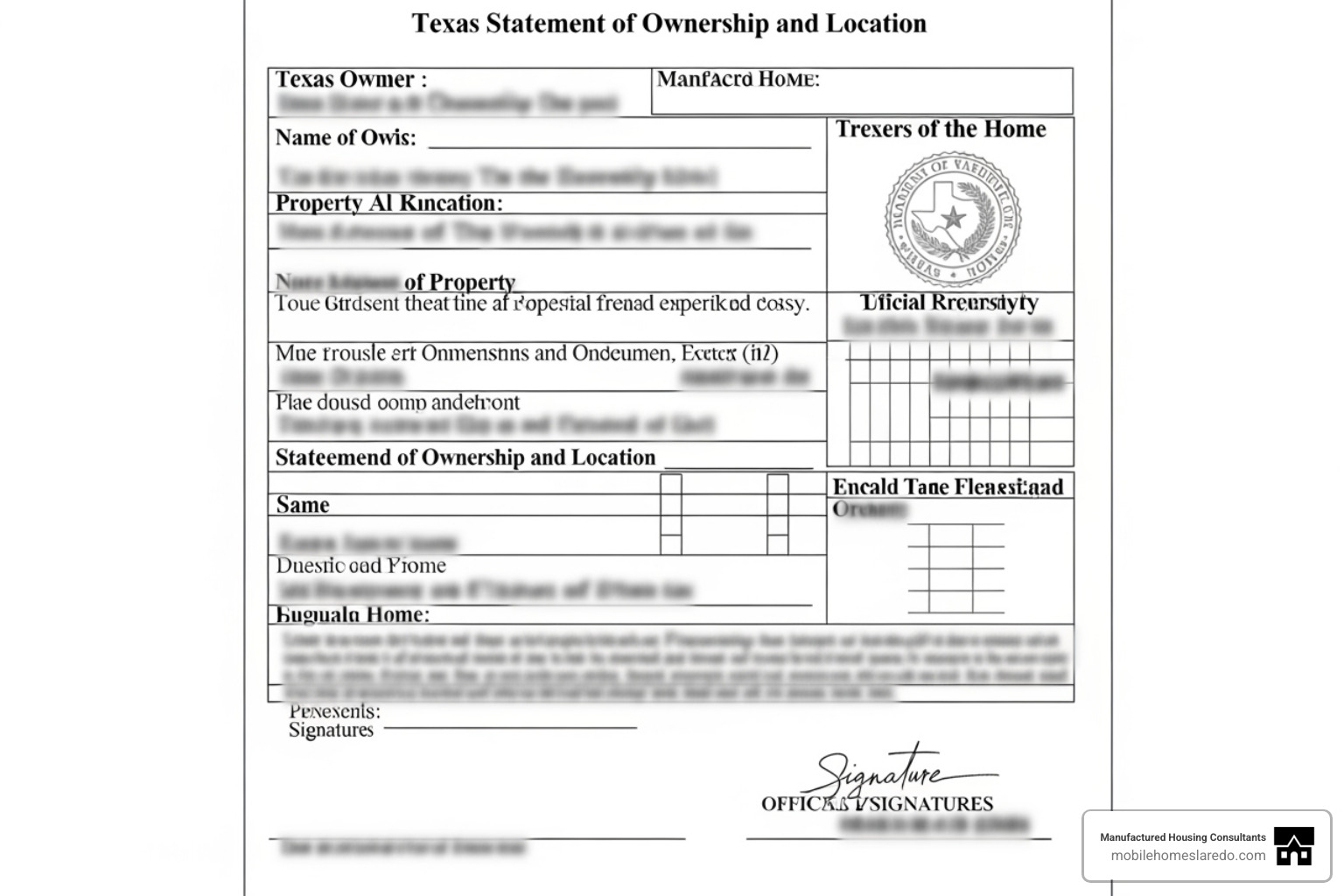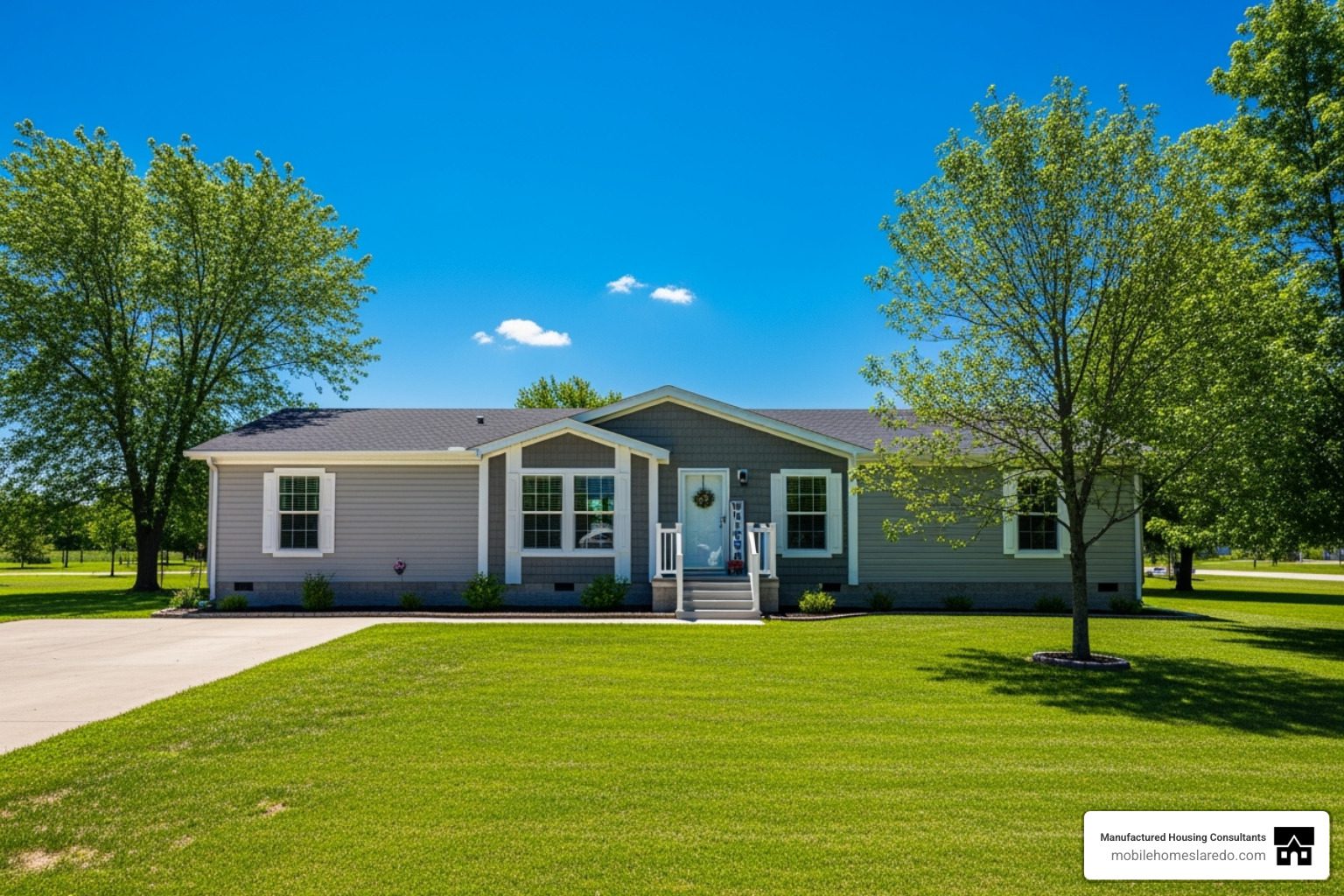Your Guide to a Successful Sale
Knowing the right steps to sell manufactured home property in Texas can mean the difference between a quick, profitable sale and months of frustration. The process differs from traditional real estate, especially if your home is on leased land in a mobile home park.
Quick Answer: How to Sell Your Manufactured Home
- Gather your documentation – Title, bill of sale, certificate of occupancy, and proof of taxes paid
- Prepare your home – Make repairs, clean thoroughly, and improve curb appeal
- Determine your price – Get a professional appraisal or check NADA values for homes built after 1976
- Market effectively – Use specialized manufactured-home listing sites, Facebook Marketplace, and local classifieds
- Steer the closing – Handle title transfer (similar to a vehicle) and coordinate any relocation logistics
The manufactured housing market is growing, which means more buyers are actively looking for affordable housing options like yours.
What makes selling a manufactured home unique is that it’s typically classified as personal property, not real estate. This means you’ll transfer the title much like selling a car, rather than going through a traditional home closing. The average manufactured home sells for around $121,600 in 2024, though prices vary widely.
If your home is in a mobile home park, you’ll need to work with park management and ensure your buyer understands their lot rent obligations. With proper preparation and the right strategy, you can sell your manufactured home quickly and for a fair price. This guide walks you through every step.

Your Step-by-Step Guide to Sell a Manufactured Home
Selling a manufactured home without land is a unique but straightforward process. Think of it more like selling a vehicle than a traditional house. Let’s walk through the steps.
Step 1: Handle the Paperwork and Legalities
Before you can sell manufactured home property, you must organize your documentation. Skipping this step causes major headaches. When selling without land, you’re selling the structure itself, which is common in Texas for homes on leased lots.

Your home is likely classified as personal property, not real estate. This affects the entire process. The most critical document is the home’s title, which proves ownership. If it’s lost, request a replacement from the appropriate state or county office—no title means no sale.
You’ll also need:
- A Bill of Sale to record transaction details and protect both parties.
- A Certificate of Occupancy to prove the home meets local safety and building codes.
- Proof of paid taxes, such as personal property taxes or registration fees.
If your home is in a community, work with park management. They may need to approve the new resident, who must understand the lot rent and park rules. Finally, understand your home’s value. Homes built after 1976 have a NADA® value, or you can get a professional appraisal. For more guidance, you can consult online resources on determining mobile home values.
Step 2: Prepare and Price Your Home to Sell a Manufactured Home for Top Dollar
A well-prepared home sells faster and for a better price. This is your chance to make a great first impression.

Start with repairs and maintenance. Fix leaky faucets, sticky doors, and ensure HVAC and appliances work. Small fixes show the home is well-cared for. Next, clean and declutter. A spotless home feels larger and more welcoming. Remove personal items so buyers can envision themselves living there.
Improve curb appeal. Simple landscaping like fresh mulch helps. Consider updating vinyl skirting to stone or brick and repair damaged siding. Inside, staging helps showcase the home’s flow. Open curtains for natural light and consider affordable new lighting fixtures well below $100. In some locations, selling it furnished with a theme like a fresh beach cottage can be appealing.
Pricing is a critical decision. While the average price is around $121,600 in 2024, your home’s value depends on its age, condition, and local market. Getting a professional appraisal is the best way to determine its true value. As appraiser Mason Spurgeon notes, they verify the home conforms to HUD standards. A pre-listing appraisal can reveal issues early, saving you headaches later.
Step 3: Create an Effective Selling Strategy
With your home prepared and priced, it’s time to market it with a strong online presence. Nearly all buyers search online first, so your listing must grab their attention. Use high-quality photos and consider a virtual tour to create a positive first impression.
Your listing description is also vital. Write a detailed, honest narrative highlighting upgrades like hardwood cabinetry, square footage, and other features that can fetch a better selling price. Be transparent that you’re selling without land.
Where you list matters. While general sites can work, specialized manufactured-home listing platforms connect you with serious buyers. Highlight special features like a new roof or remodeled kitchen. Even small, affordable upgrades like new cabinet hardware (around $30) can improve perceived value.
Understand your target buyers. Manufactured homes appeal to diverse residents, from retirees in 55+ communities to families in all-age parks. Knowing the strongest markets in certain states and cities can inform your strategy.
Step 4: Steer Offers and Successfully Sell a Manufactured Home
Once offers come in, you’ll need to manage negotiations, financing, and closing details.

When reviewing offers, look beyond price. Consider the buyer’s financing, contingencies, and timeline. A solid cash offer might be better than a higher one with uncertain funding. Negotiation is about finding a solution that works for both parties.
Understanding buyer financing is crucial. Traditional mortgages like FHA loans are harder to get for homes on leased land, as lenders often require certification that the home is properly installed. Many buyers use chattel loans from specialized lenders for homes classified as personal property; these are often easier to obtain, though interest rates may be higher. Owner financing can also broaden your buyer pool, but work with a legal professional to create a secure agreement.
The closing process is simpler than a traditional real estate closing, mainly involving the transfer of the title and Bill of Sale. The buyer then registers the new title with the appropriate state agency.
Relocation logistics are the buyer’s responsibility but are a major consideration. Moving a home is expensive and complex. The buyer must hire a licensed mover, get a permit for the move, and find a new lot to buy or rent.
Final Thoughts and Your Next Steps
By following this guide, you’re now equipped to successfully sell manufactured home property with confidence. To recap, the key is to:
- Gather essential paperwork like the title and Bill of Sale.
- Prepare your home with repairs, cleaning, and staging.
- Price it competitively using market data.
- Market it effectively online with great photos.
- Steer offers, buyer financing, and closing.
The most common problems are buyer concerns about moving costs and financing for a home without land. Being upfront and pointing them toward viable financing solutions removes major obstacles.
Selling your home doesn’t have to be overwhelming. With the right preparation, realistic pricing, and an understanding of your buyer’s needs, you can achieve a successful sale.

